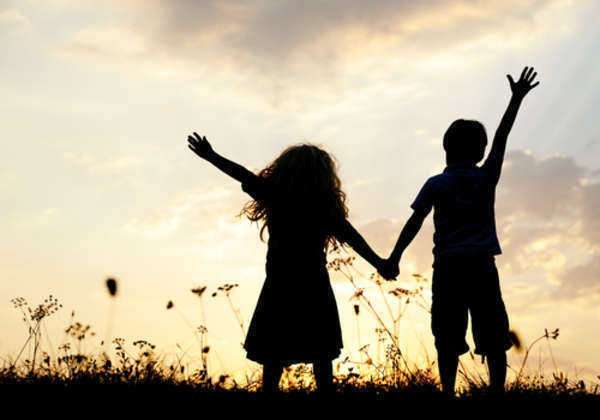Parental Rights Disputes: Unraveling the Hidden Battles for Custody

Parental rights disputes have emerged as a significant societal issue, often leading to protracted custody battles that can deeply affect families and children alike. These disputes are not merely legal confrontations; they encapsulate emotional struggles, societal norms, and evolving legal frameworks. As parents navigate the complexities of custody arrangements, understanding the underlying factors and implications of these disputes becomes essential. This article delves into the multifaceted nature of parental rights disputes, exploring their legal context, common causes, impacts on children, and the potential for mediation, while also considering future trends in this ever-evolving landscape.
Understanding Parental Rights: An Overview of Custody Disputes and Their Implications
Parental rights refer to the legal rights and responsibilities that parents have concerning their children, including decisions about education, healthcare, and general welfare. Custody disputes arise when parents cannot agree on the terms of these rights, often leading to legal battles that can be both financially and emotionally draining. The implications of such disputes extend beyond the courtroom, affecting family dynamics, children’s well-being, and the broader community. As parents seek to assert their rights, the outcomes of these disputes can shape the lives of children for years to come, making it crucial to understand the nuances involved in custody arrangements.
The Legal Framework: Key Laws Governing Parental Rights and Custody Arrangements
The legal landscape surrounding parental rights and custody is governed by a complex array of federal and state laws, which can vary significantly across jurisdictions. Key legislation includes the Uniform Child Custody Jurisdiction and Enforcement Act (UCCJEA), which aims to provide consistency in custody determinations across state lines, and the Child Custody Protection Act, which addresses interstate custody disputes. Additionally, family law statutes often prioritize the best interests of the child, a principle that guides courts in making custody decisions. Understanding these laws is essential for parents navigating custody disputes, as they dictate the legal processes and potential outcomes of their cases.
Common Causes of Parental Rights Disputes: Factors Leading to Custody Battles
Custody battles can arise from a variety of factors, including divorce, separation, domestic violence, substance abuse, and differing parenting styles. Emotional turmoil during relationship breakdowns often exacerbates these disputes, leading parents to adopt adversarial positions. Additionally, external influences such as family members, friends, or societal expectations can further complicate matters. In some cases, one parent may perceive the other as unfit or incapable of providing a stable environment for the child, prompting legal action. Understanding these common causes is vital for parents to address underlying issues and seek resolution before disputes escalate into contentious legal battles.
The Impact of Custody Disputes on Children: Emotional and Psychological Considerations
The emotional and psychological toll of custody disputes on children is profound and often long-lasting. Research indicates that children involved in high-conflict custody battles may experience anxiety, depression, and behavioral issues, as they grapple with feelings of loyalty, confusion, and loss. The instability created by protracted legal battles can disrupt their sense of security and attachment, leading to difficulties in forming healthy relationships in the future. It is essential for parents and legal professionals to recognize the potential harm these disputes can inflict on children and to prioritize their emotional well-being throughout the custody process.
Mediation and Alternative Dispute Resolution: Navigating Custody Conflicts Amicably
Mediation and alternative dispute resolution (ADR) methods have gained traction as effective means of resolving custody disputes without resorting to lengthy court battles. These approaches encourage open communication and collaboration between parents, allowing them to negotiate terms that prioritize the best interests of their children. Mediators, often trained professionals, facilitate discussions and help parents explore creative solutions that may not be possible in a traditional courtroom setting. By fostering a cooperative environment, mediation can reduce the emotional strain on families and promote healthier post-separation relationships, ultimately benefiting the children involved.
Future Trends in Parental Rights: Evolving Legal Standards and Societal Perspectives
As societal norms and family structures continue to evolve, so too do the legal standards governing parental rights and custody arrangements. Increasing recognition of diverse family dynamics, including same-sex couples and non-traditional parenting arrangements, is prompting lawmakers to reconsider existing laws. Additionally, there is a growing emphasis on shared parenting and co-parenting arrangements, reflecting a shift toward collaborative approaches that prioritize children’s needs. As these trends unfold, it is crucial for parents and legal professionals to stay informed about changes in legislation and societal attitudes, ensuring that custody arrangements remain equitable and in the best interests of children.
Parental rights disputes represent a complex interplay of legal, emotional, and societal factors that can significantly impact families and children. By understanding the legal framework, common causes, and the potential for mediation, parents can navigate these challenging situations more effectively. As society continues to evolve, so too will the standards and practices surrounding parental rights, necessitating ongoing dialogue and adaptation. Ultimately, prioritizing the well-being of children in custody disputes is essential for fostering healthier family dynamics and ensuring a brighter future for the next generation.







 Laws regarding children are significant in terms of how they protect and give rights to children. In the past, childern have been barely viewed as entities in and of themselves. They were afforded few rights, and as such, they were treated poorly under the law.
Laws regarding children are significant in terms of how they protect and give rights to children. In the past, childern have been barely viewed as entities in and of themselves. They were afforded few rights, and as such, they were treated poorly under the law.





